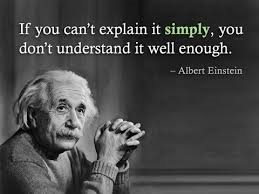 7.3 Awareness
7.3 Awareness
Persons doing work under the organization’s control shall be aware of:
a) the quality policy;
b) relevant objectives;
c) their contribution to the effectiveness of the quality management system, including the benefits of improved quality performance;
d) the implications of not conforming with the quality management system requirements.
This is one of my favorite structural and fundamental changes with this draft of ISO9001:2015. It is helpful and elegant in its simplicity to provide a simple explanation and some guidance to organizations (and there are many) who struggle so much with the simple requirement of the quality management system being built upon a central quality policy and people understanding it!
How many ways have organizations tried to meet the requirement of “shall understand the quality policy”? Hand bills, posters, employee badges with the policy on the back, memorization, chants, bumper stickers, geesh! And the most success any of these companies can muster is that most of their employees can repeat the policy by rote or at least a catch phrase that closely resembles the policy. When hit with the follow up question of “and what does that mean to you?” or “and what is your role in the quality policy?”, the employee flushes white and staggers away wearing a cloak of shame for having failed such a simple test. This is typically because quality policies are overthought and over-engineered and under-understood.
This is ironic because the quality policy is said to be created, adopted and fully supported by top management, and often times, even top management doesn’t understand what they wrote or what it means. So, how is an “Average Joe (or Jill)” who comes to work just wanting to put in a fair day’s work for a fair day’s pay supposed to understand what it means? Top management should take guidance from the Einstein quote above and keep this as simple as possible. Because it is so imperative that the quality policy be understood in order for it to serve its purpose as the bedrock for the quality management system.
I think this particular clause is extremely simply written and straight to the point. Each of these points was in ISO9001:2008, but not grouped together in this way. This structure makes the whole requirement much easier to understand and implement. Tying together that all persons must understand the policy (not just be able to recite it) coupled with the associated objectives as well as an understanding of exactly how their own work may impact the organization’s product/service. If presented during orientation as a new addition to the organization, or during introduction into a new area or job, this can be so effective in the employee’s understanding of what they are to do, how performance will be evaluated, how to interpret feedback and what they are responsible for in terms of compliance. And it is management’s responsibility to create a policy that is easily understood, objectives that support the policy and processes that are designed to achieve the objectives presented. Easy beezy!
THIS WEEK’S HOMEWORK
First, take a good look at your quality policy. Does it make sense? Is it easily understood or is it a really wordy, run-on sentence which ticks all the boxes for compliance but has no meaning to its users? If so, then suggest a retooling of your quality policy. Yes, I know, we’ll have to reprint the posters, but take the opportunity to do it anyway. Next, take a good sampling of your team, and try a different approach than the typical pre-audit walkthrough or real time audit approach. Table the quiz-approach and just chat with several of your team mates about how your quality policy feels to them. Is it sensible or silly? Does it really tell a story or is it just a bunch of words? What is their impression of what a quality policy should be (and whatever they say, write it down word for word and consider incorporating their language into your revision).
Stay involved and engaged – SUBSCRIBE!
